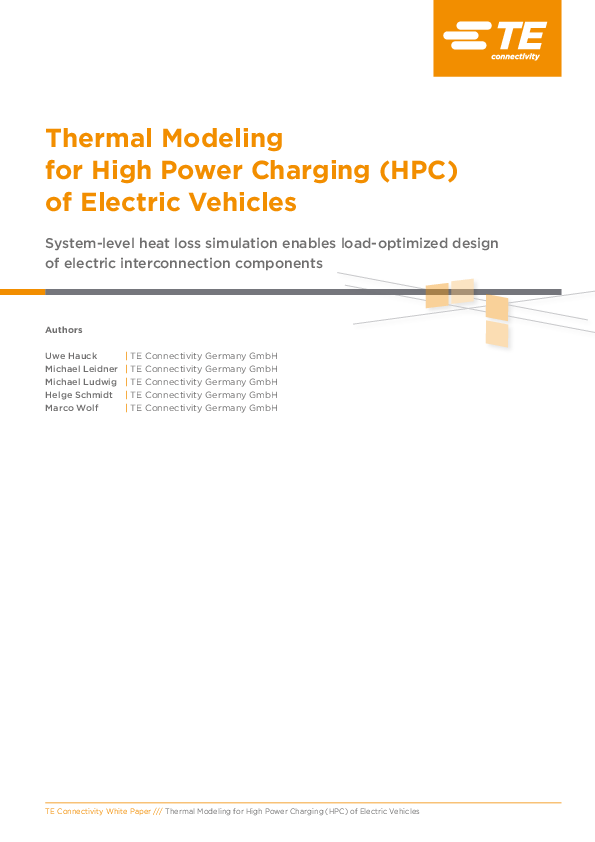Thermal Modeling for High Power Charging (HPC) of Electric Vehicles
Powertrain electrification, automation and increasing autonomy and the emergence of new mobility business models are the three dominant worldwide trends that are shaping the transformation to the next generation of mobility. These trends will have a profound impact on the electrical power and electronic architectures (E/E architecture) of future vehicles.
The next generation of vehicles will generate, process and communicate much more data than current vehicles. Wireless networking via mobile technologies (e.g. 5G, V2X) enables communication with other vehicles or with the surrounding infrastructure and also makes software updates over-the-air (OTA) possible. At the same time, high current power will be transmitted within electrified cars. Already today’s electric cars have in excess 120 kW of engine power. The high-power levels required for this performance produce strong electromagnetic fields which require protection of nearby signal lines and electronic components against interference and malfunction (high data rates of up to 20 Gbit vs. high power).
Put simply, the physical layer will play a key role as the backbone of future vehicle functionality and in particular its reliability. It means low voltage data connectivity networks and high voltage (HV) drive systems must work ultra-reliably and safely in parallel. TE Connectivity (TE) in its role as an expert on interconnection technology, switching and sensors contributes technological innovations for the signal and power transmission in future vehicles.

